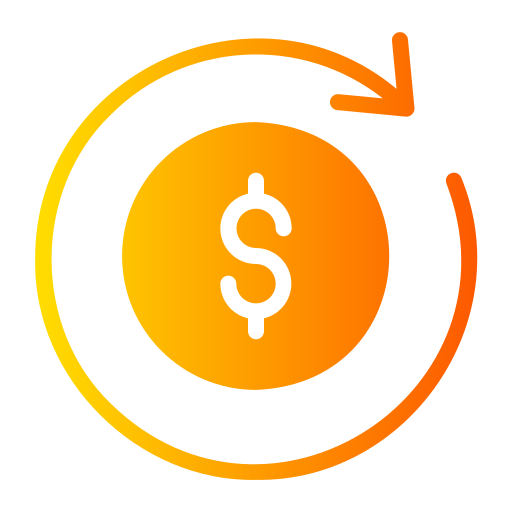As a musician, one of the most important aspects of your compositions is the chord progression.
The sequence of chords you choose can greatly impact the emotion and overall feel of a piece of music. Improving your chord progressions can not only enhance the quality of your music, but it can also help you to better convey the message or story you are trying to tell through your compositions.
In this article, we will discuss four easy ways that you can improve your chord progressions.
Whether you are a beginner or an experienced musician, these methods can help you to add variety and interest to your progressions and take your music to the next level.
Jump To Section
1. Experiment with different chord voicings
2. Use chord substitutions
3. Create tension and release through modulations
4. Try using non-diatonic chords
1. Experiment with different chord voicings
In its most basic form, a chord is a group of notes played together. The way that these notes are arranged and played, however, can greatly impact the sound and feel of the chord. This is where chord voicings come into play.

A chord voicing refers to the specific arrangement of a chord's individual notes. This can include the order in which the notes are played, as well as which octave they are played in. By altering the voicing of a chord, you can change its sound and the way it sits in a progression. This can add interest and variety to your music, and help you to create the desired mood or emotion.
There are countless ways to alter the voicing of a chord, and the possibilities are virtually endless. One of the most common techniques is to play the chord in an inversion. This means that one or more of the chord's notes are played in a different octave than they would normally be played in. For example, instead of playing a C major chord in its root position (C, E, G), you could play it in first inversion (E, G, C) or second inversion (G, C, E). This simple change in voicing can give the chord a completely different sound and feel.
Another way to experiment with chord voicings is to alter the order in which the chord's notes are played. For instance, instead of playing a D minor chord in the standard order (D, F, A), you could play it as an A minor chord with the notes rearranged (A, D, F). This can add unexpected dissonance and tension to your progressions, and can be a powerful tool for creating drama and emotion in your music.
There are countless other ways to alter chord voicings, and the best way to learn is simply to experiment and see what works for you. Don't be afraid to try new things and see how different voicings affect the sound and feel of your chords. With time and practice, you will develop a greater understanding of how chord voicings can be used to enhance your compositions.
2. Use chord substitutions
A chord substitution is the replacement of one chord in a progression with a different chord. This can be done for a variety of reasons, such as to add variety, create tension or resolution, or simply to add a different flavor to the progression.

There are countless ways to use chord substitutions, and the possibilities are virtually endless. One of the most common chord substitutions is the use of secondary dominants. A secondary dominant is a chord that temporarily replaces the tonic chord (the chord built on the root note of the key) and leads back to the tonic chord. For example, in the key of C major, the tonic chord would be C major. If you wanted to create tension and resolution, you could temporarily replace the C major chord with the G major chord (the dominant of C major). This creates a sense of movement and resolution when the C major chord returns.
Another common chord substitution is the use of dominant seventh chords. A dominant seventh chord is a chord built on the fifth scale degree of a major scale, and it contains a major triad with a minor seventh interval added. These chords have a strong pull towards the tonic chord, and can be used to add tension and resolution to a progression. For example, in the key of C major, the dominant seventh chord would be G7. This chord can be used to substitute for the tonic chord, creating a sense of movement and resolution when the tonic chord returns.
Another way to use chord substitutions is to simply replace one chord in a progression with a different chord that has a similar function. For example, if you are using a C major chord as the tonic chord in a progression, you could try replacing it with an F major chord (the subdominant of C major). This creates a similar sense of stability and resolution as the tonic chord, but with a slightly different flavor.
3. Create tension and release through modulations
A modulation is the temporary change from one key to another within a piece of music. This can be done for a variety of reasons, such as to add variety, create tension or resolution, or simply to add a different flavor to the progression.

There are countless ways to use modulations, and the possibilities are virtually endless. One of the most common ways to use modulations is to create a sense of tension and resolution within a progression. This can be done by modulating to a closely related key, such as the dominant or subdominant key. For example, if you are in the key of C major, you could modulate to the key of G major (the dominant of C major) to create tension, and then resolve back to C major to release the tension.
Another way to use modulations is to create a sense of surprise or dissonance. This can be done by modulating to a more distant key, such as a parallel minor key or a completely unrelated key. For example, if you are in the key of C major, you could modulate to the key of A minor (the parallel minor of C major) to create a sense of dissonance, and then resolve back to C major to create a sense of resolution.
Modulations can also be used to simply add variety and interest to a progression. This can be done by modulating to a completely unrelated key, such as modulating from a major key to a minor key or vice versa. This can add a completely different flavor to a progression and keep the listener guessing.
4. Try using non-diatonic chords
A diatonic chord is a chord that is built using the notes of a specific key. For example, in the key of C major, the diatonic chords would be C major, D minor, E minor, F major, G major, A minor, and B diminished. Non-diatonic chords, on the other hand, are chords that are built using notes outside of the key.

One of the most common ways to use non-diatonic chords is to add color and interest to a progression. This can be done by using chords that contain notes outside of the key, such as using a major seventh chord in a minor key or using a diminished chord in a major key. These chords can add unexpected dissonance and tension to the progression, and can be a powerful tool for creating drama and emotion in your music.
Another way to use non-diatonic chords is to create a sense of movement and resolution. This can be done by using chords that function as secondary dominants or dominant sevenths, but which are built using notes outside of the key. For example, if you are in the key of C major, you could use an E7 chord (the dominant of A minor) to create tension and resolution within the progression. This creates a sense of movement and resolution, and can add interest and variety to the progression.
In conclusion, there are many simple yet effective ways to improve your chord progressions. By experimenting with different chord voicings, using chord substitutions, creating tension and release through modulations, and trying out non-diatonic chords, you can add interest and variety to your music and better convey the mood or emotion you are trying to create.
These methods can be used by musicians of any skill level, and the more you experiment with them, the more you will understand how they can enhance your compositions. So don't be afraid to try new things and see what works for you. With time and practice, you will develop a greater understanding of how to create powerful and effective chord progressions in your music.
If you are looking for high quality samples and presets, check out our collection here.













































